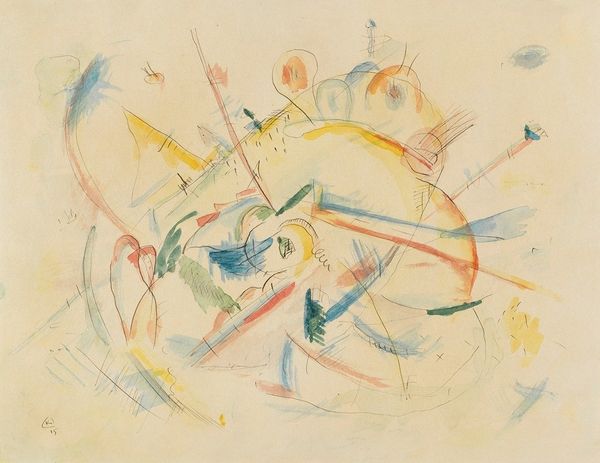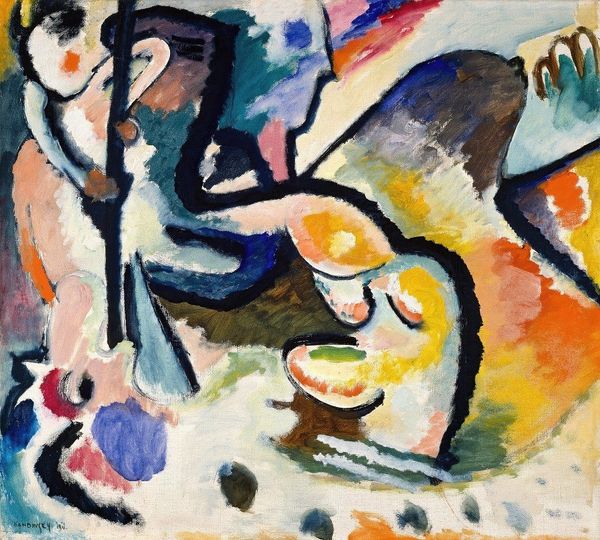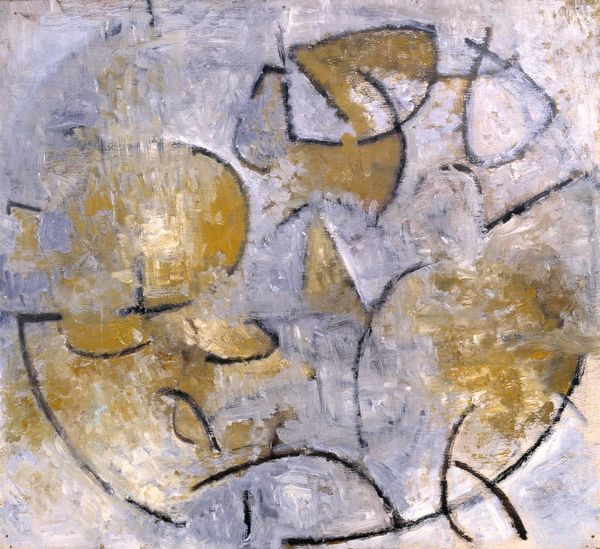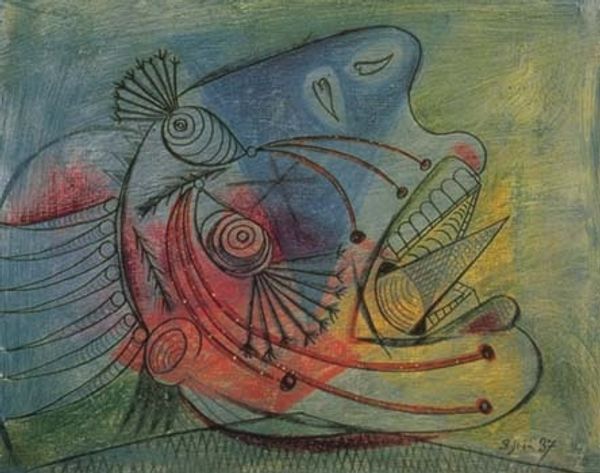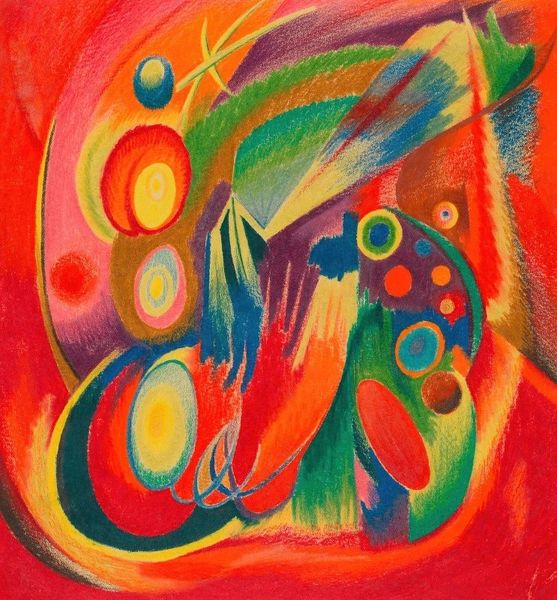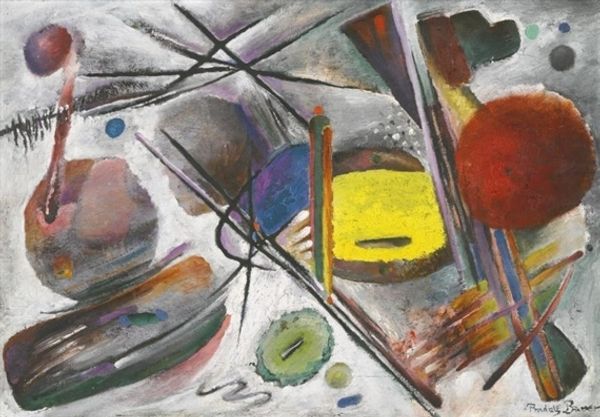
drawing, oil-paint, pastel
#
drawing
#
oil-paint
#
oil painting
#
geometric
#
pastel chalk drawing
#
expressionism
#
abstraction
#
line
#
pastel
#
modernism
Dimensions: 17 1/2 x 22 3/8 in. (44.45 x 56.83 cm) (canvas)25 1/4 x 30 1/4 x 2 3/4 in. (64.14 x 76.84 x 6.99 cm) (outer frame)
Copyright: No Copyright - United States
Editor: Standing here in front of Paul Klee's "Howling Dog" from 1928, it's quite captivating. It appears to be oil paint and pastel chalk drawing on canvas. The colour palette gives an eerie yet gentle atmosphere. The geometric elements and abstract lines give it movement and, well, almost a sonic quality! How do you interpret this work in terms of its formal components? Curator: Indeed. Let us put aside any anecdotal impulses and consider its intrinsic qualities. Observe how Klee articulates the "dog" not through mimetic representation, but through a dynamic interplay of line, form, and colour. The background, rendered in blended pastels, acts as a field. Ask yourself how the linear construction of the "dog" contrasts with this ground? Editor: The lines certainly dance, giving a sense of…energy? They remind me of musical notes. But what of the placement of that circular form? It resembles a sun or moon. How does that affect the composition? Curator: Precisely. The circle, or orb, acts as a visual anchor, and note how the lines, however abstract, seem to orbit it. This careful construction creates both tension and balance. The restrained palette further concentrates our focus on these formal relationships, compelling us to move from narrative interpretation to an appreciation of compositional dynamics. The interplay between colour and form creates a dynamic field where representation serves only as a vehicle for formal exploration. Editor: So, focusing less on ‘dog’ and more on the overall experience, focusing on what our eyes perceive and how colours interplay with abstract geometrical form. Fascinating, so it's about composition. Thanks! Curator: Precisely! And I would add, line! Klee's use of line, colour and form shows us something about feeling, regardless of knowing it is called "Howling Dog."
Comments
Join the conversation
Join millions of artists and users on Artera today and experience the ultimate creative platform.
minneapolisinstituteofart almost 2 years ago
⋮
Klee's playful depiction of a solitary dog baying at a radiant moon exemplifies the artist's reliance on a linear style of representation. Using a series of sinuous lines, Klee creates a harmonious arrangement of three distinct forms: a dog, the moon, and in an unusual but charming visualization of sound, the dog's extended howl. Placed at the center of an amorphous ground of swirling colors, the dog's howl assumes a dominant pictorial role, winding, bending on itself, hanging in the night air like a wisp of smoke, while representing a visual as well as temporal record of the emanating sound. Klee's two-dimensional composition effectively supplants traditional spatial illusion, revealing a simple, yet elegant ideogram for the painting's whimsical subject.

